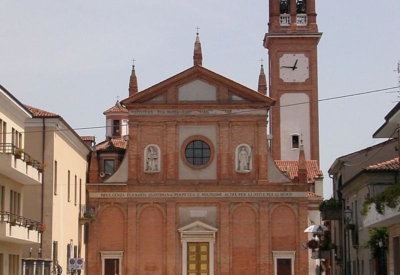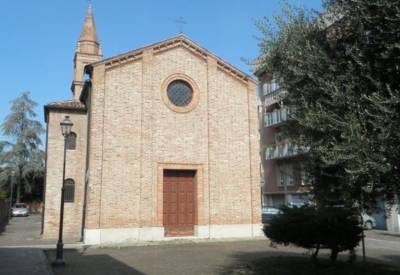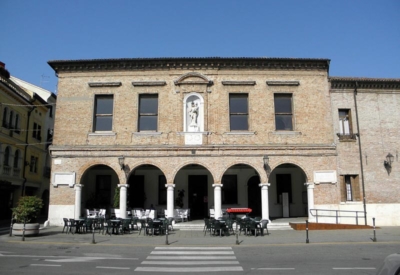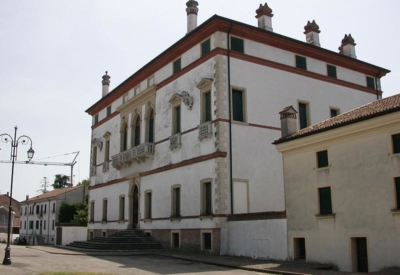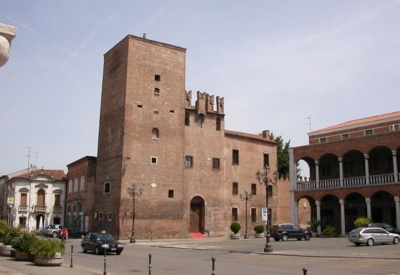LENDINARA
Lendinara, in the province of Rovigo has around 12,000 inhabitants. Since the 18th century, the city has been known as the ‘Athens of Polesine’ due to its many historical, artistic, cultural and religious treasures. The sanctuary known as Santuario della Beata Vergine del Pilastrello is a very important destination for pilgrimages.
Its history begins in Roman times, as demonstrated by a range of archaeological finds like funeral urns, tombstones, coins, glass and even traces of roads and hydraulic works. The first official mention of the town dates back to 870, when the Uberto Cattaneo from Verona was granted lordship over the town by the Carolingians, a lordship that lasted for over four centuries. In the 11th century there was an imposing castle in Lendinara, located to the left of the Adigetto River and surrounded by fortifications that contained a large part of the town. Outside the walls were the parish church of Santa Sofia and the monastery of San Biagio around which various districts formed. The town continued to develop rapidly, thanks to the Adige River, with the construction of churches and villas and the presence of notaries, families and a well-developed municipal organisation. It had a podestà from 1225 and was endowed with the first statute in Polesine in 1321. The town was destroyed by Ezzelino da Romano in 1246. After it was burnt down, a large Franciscan convent, known as ‘San Marco’ (St. Mark’s) was built. The convent was finally supressed in 1810. Towards 1275, the city became a republic for a short period. The Paduans took control of the city in 1283 and then ceded it to the Este family. During this period, the ‘Granarone’, a large provisions storehouse, was built. The castle had a five-storey main tower and a moat that surrounded the entire town, with access to the town controlled by four gates. After being sold to the Venetians, Lendinara enjoyed a period of splendour in the 15th century as numerous convents that preserved and spread art sprang up. The great school of the Canozio family of woodworkers was also created, among whom Lorenzo(1426-1477), the creator of Gothic-style works, excelled.
Like the whole of Polesine, it suffered frequent flooding over the years. In 1495 Lendinara received the title of ‘city’. It continued to expand over time: in the 16th century, it was enhanced by stately homes and oratories. In the 17th century, the population was dedicated not only to agriculture but also to the wool industry and the leather trade. The first printing press was founded there in 1695 and in the 18th century, the city was overhauled with the remodelling of public and private buildings, and streets and squares were paved. There was also a strong cultural stimulus, which is why Lendinara was known as ‘the Athens of Polesine’.
From the end of the 18th century, the city underwent the various dominations to which the whole of Polesine was subjected, with the succession of the French and Austrian rulers, until it became part of the Kingdom of Italy.
There was a great deal of industrial development with sugar production, a fertiliser factory, a jute and hemp factory and food production. There are currently furniture, clothing and shoe factories.
Worth Visiting
The Santuario della Beata Vergine del Pilastrello, a sanctuary to the Virgin Mary built following miraculous events in the 16th century
The Church of San Biagio, an elegant, neoclassical church which has a 19th century appearance, but there has been an oratory dedicated to San Biagio in Lendinara since the 13th century
The Church of San Francesco, founded in 1486 for the convent of the Cassinese Benedictine nuns and dedicated to St Agatha
The Church of Santa Maria e Sant’Anna, built in 1433 by Anna Bollato Falconetti. In the 16th and 17th centuries, there was a convent of Benedictine nuns near the church. In 1799, it was occupied by the Russians who celebrated Orthodox ceremonies there. The church was restored in the 19th century at the behest and under the supervision of Don Gaetano Baccari.
The Church of San Giuseppe, just a short walk from the cathedral. It was built around 1500 and initially dedicated to Santa Maria delle Grazie.
The Church of San Rocco, built in 1516 by the City Council as thanks to St. Roch for having escaped the plague in 1511
Palazzo Pretorio, one of the oldest Este buildings in Polesine, dating back to the late 14th century. It was first built as a castle and was the civil and military seat of the Este family, and later the Venetians.
Palazzo Comunale, built by the Este family in the 14th century and now Lendinara Town Hall.
Torre dell’Orologio, tower that marked one of the entrances to the castle-town. It was transformed into a bell tower and equipped with a large clock in the 17th century
Palazzo Ca’ Dolfin-Marchiori and its Romantic garden, built in the 16th century, possibly to a design by Vincenzo Scamozzi, a pupil of Palladio, it has extensive grounds in the romantic style at the rear, the brainchild of Domenico Marchiori, painter and poet
Palazzo Malmignati-Boldrin, in the Ferrara style, built in the first half of the 16th century at the behest of a Knight of the Venetian Republic, Vincenzo Malmignati. Palazzo Boldrin the home of the Municipal Library, founded in 1787
Teatro Ballarin, built in the 15th century by the Este family. It was initially a food store called ‘granaron’. It was renovated in the 19th century and converted into a theatre to a design by Antonio Foschini
Don’t Miss
The Romantic-style gardens of Palazzo Ca’ Dolfin-Marchiori
Parco delle Rimembranze

